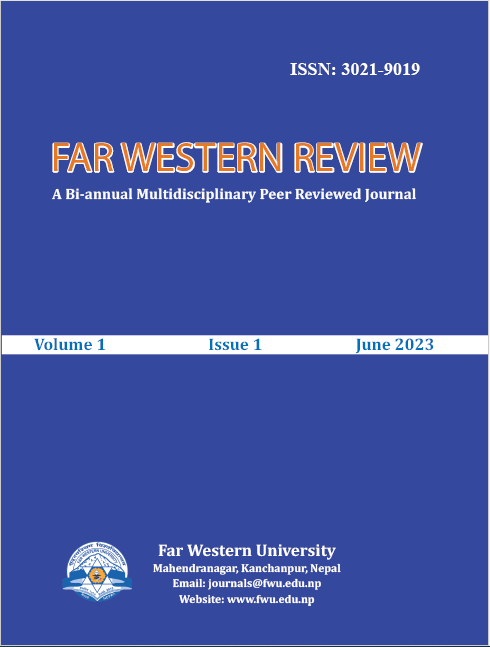Impact of External Debt on Economic Growth of Nepalese Economy
DOI:
https://doi.org/10.3126/fwr.v1i1.58328Keywords:
External debt, gross fixed capital formation, unit root, autoregressive distributed lag, error correction modelAbstract
This paper aims to identify the impact of external debt on the GDP of Nepal using a qualitative and quantitative research design (mixed design). The test of the unit root of the series is the first step in determining whether the data are stationary or not. An augmented Dicky-Fuller unit root test and a co-integration test are employed to check the relationship of the variables under study. This study reveals that LNED, LNGFCF, LNTR, LNEXP, LNREM, and LNBRATE are insignificant. The coefficient of LNED (-0.82) implies that a 1 percent increase in external debt leads to a decrease of 0.82 percent in gross domestic production, just as a 1 percent increase in gross fixed capital formation contributes to an increase of 3.28 percent in GDP. other macroeconomic variables like the coefficient of LNTR (-3.78) imply that a 1 percent increase in total revenue decreases 3.78 percent in GDP; the coefficient of LNEXP (2.93) implies that a 1 percent increase in government expenditure increases 2.93 percent in GDP. In the same way, LNREM and LNBRATE contribute negatively to GDP. The speed of adjustment from the previous year’s disequilibrium in GDP added to the current year’s equilibrium is only 20.63 percent. Heteroscedasticity test: Breusch-Pagan-Godfrey and normality test are greater than 5 percent, which is desirable. So, this model is free from heteroscedasticity. The residual is normally distributed. The model is robust and stable, as both the lines’ long-run and short-run coefficients are acceptable over the study period from 1974/1975 to 2019/20. The diagnostic tests confirm that the models have the desired econometric properties.
Downloads
Downloads
Published
How to Cite
Issue
Section
License
Copyright (c) 2023 Keshar Bahadur Kunwar

This work is licensed under a Creative Commons Attribution-NonCommercial 4.0 International License.
CC BY-NC: This license allows reusers to distribute, remix, adapt, and build upon the material in any medium or format for noncommercial purposes only, and only so long as attribution is given to the creator.




